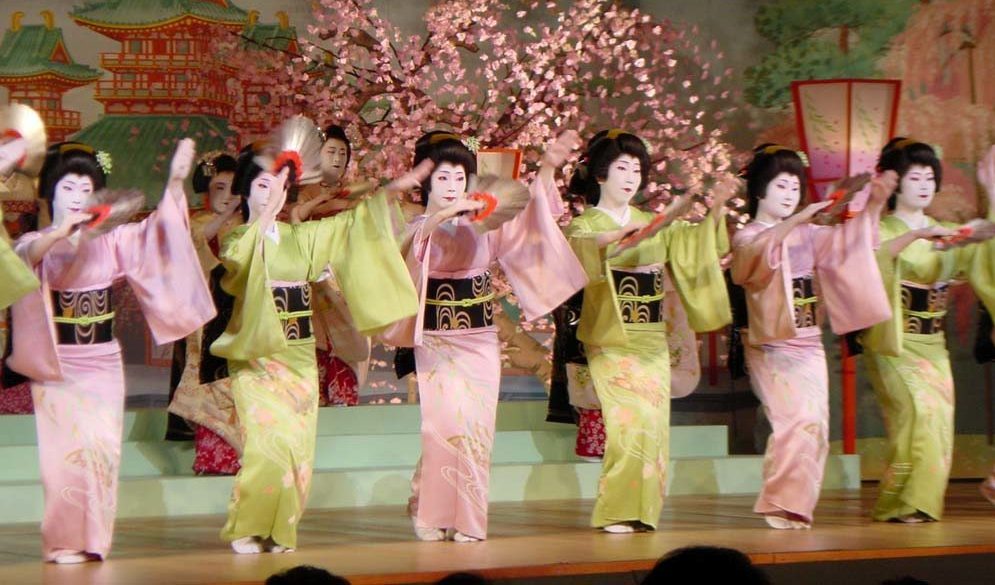Like this post? Help us by sharing it!
To say that Japan is proud of its seasons is something of an understatement — but which is the best? The answer might not be as simple as you think…
Spring

Pros:
If you were going by popularity alone, spring would win hands-down, for one simple reason: cherry blossom. You might have heard, but the Japanese are crazy about cherry blossom. Every year, the sakura front sweeps along the length of the archipelago, bringing with it flower-viewing parties, sakura-flavoured food and drink, and general festivities. Kyoto’s geisha perform their bi-annual dances between late March and early May, offering a rare peep behind the curtain of the “floating world”, and temperatures country-wide are warm and lovely. Spring is just the perfect season, in every single way.

Cons:
Except one. It’s busy. Really busy. After a long, cold winter, everybody wants a piece of the cherry blossom — and a string of national holidays at the beginning of May make it doubly tricky to avoid the crowds. Expect trains, top sights and accommodation to be booked up well in advance, and parks to be chock-full of parties picnicking under the trees. That said, if you’re willing to stray from the beaten path, there are plenty of alternative destinations where you can avoid the hordes.

Summer

Pros:
Summer is party season. You can feel the electricity in the atmosphere – everyone is going somewhere or doing something. People are making their way to the beach, festivals and parties are happening everywhere, and firework fanatics are one-upping each other with mind-blowing, competitive displays. (Seriously — you haven’t seen fireworks until you’ve seen them in Japan).
In the natural world, everywhere is lush and green, to the extent that it can sometimes feel like you’re being swallowed up by all that vegetation. On Yakushima Island, loggerhead turtles are hatching on the beaches and scrambling towards the sea, while on Mount Fuji, hikers are hatching from their sleeping bags and scrambling towards the summit for sunrise. Surely summer has to be the finest season of all.

Cons:
That is, if you don’t mind being hot, hot, hot! August highs in Japan frequently exceed 30°C (86°F), but it’s the humidity that’s the real kicker — that plus cloudy skies, abundant rain, and the occasional typhoon. What’s more, if you’re out in the countryside, summer also means lots of bugs, including the scourge of every summer holiday: mosquitoes. You can avoid the hottest and stickiest weather by spending time at higher altitudes, or heading north to Tohoku and Hokkaido.

Autumn

Pros:
Move over, cherry blossom: Japan’s fall foliage is absolutely breathtaking, setting the countryside ablaze with reds, oranges and golds from September to November. The weather cools down to more comfortable temperatures, and there are lots more sunny, blue-sky days than in summer (though not as many as in winter). Meanwhile, Kyoto’s geisha take to the stage again for their seasonal dances. Autumn is the season to see Japan at its most beautiful.

Cons:
The only problem is, everybody knows it. Though it’s quieter than spring, autumn is the second-most popular time to year to visit Japan, so you’ll still find yourself jostling with the crowds in the more popular destinations. Though the weather is generally cool and pleasant, it’s not uncommon for there to be a heatwave in autumn — and with heaters on max in trains and shops, it can get a bit uncomfortable at times. There’s also the odd typhoon, but those have usually petered out by October.

Winter

I like to end things on a positive note, so let’s start off with the cons on this last one.
Cons:
It should come as no surprise, but winter is cold. Sometimes it’s so cold that you don’t feel like going anywhere, and all you want to do is just bundle up and stay inside all day. Average temperatures in Tokyo are around 5°C (41°F), and in Sapporo (home of the famous Snow Festival) they hover at around -4°C (25°F). It also gets dark early, and since Japan doesn’t have daylight savings, on some days it’s dark by 4.30pm.
Pros:
With the majority of tourists flocking to the cherry blossom and autumn leaves, winter in Japan is wonderfully quiet and peaceful. The air is fresh and crisp, the sky is blue and sunny nearly every day (making it the best time of year to see Mount Fuji), and the whole country is transformed into a winter wonderland with spectacular displays of illuminations. This is the time of year to hit some of the world’s best ski slopes, to see monkeys bathing in the hot springs at Yudanaka Onsen, to watch red-crowned cranes dancing in the snow in Hokkaido, and to marvel at the giant ice sculptures of the Sapporo Snow Festival. Surely, this has to be the best season to visit Japan.

In the end, it’s up to you!
As you can see, when it comes to Japan you can’t go far wrong! Take your pick of our Small Group Tour departures to join one of our esteemed tour leaders, or enjoy the flexibility of our Self-Guided Adventures.
If you still can’t pick your favourite season, head to When to Travel; your go-to guide for events and weather throughout the year.


